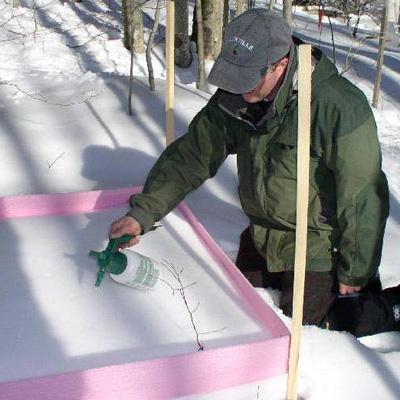Regional Analysis of Snowmelt and Storm Events: Biogeochemical and Hydrological Responses

Snowmelt and precipitation storm events have a major influence on the hydrology (properties and movement of water) and chemistry of surface waters of the northeastern United States. NSRC researchers evaluated rainstorm (late summer/early fall) and snowmelt events on four watershed study sites: Arbutus, New York; Sleepers River, Vermont; Hubbard Brook, New Hampshire; and Cone Pond, New Hampshire.
Because of the impacts of nitrate and sulfate atmospheric deposition from the burning of fossil fuels on acidification of Northern Forest ecosystems, researchers analyzed nitrate and sulfate dynamics on the watersheds. The nitrate and sulfate in soil and drainage waters associated with the snowmelt period had undergone substantial biological processing and depending on the site, mineral weathering could also have been an important source of sulfate.
Analyses using natural abundances of stable isotopes (other atomic forms) of sulfate and nitrate demonstrated that during winter snowmelt periods little of the sulfate and nitrate in drainage waters was derived directly from atmospheric deposition. An experimental tracer study at Hubbard Brook found that much of the sulfate and nitrate which infiltrated the forest floor during snowmelt was retained or transformed. Researchers discovered that for snowpack nitrate, neither immobilization by microbes, mineralization, or nitrification was significant in the forest floor during snowmelt. For sulfate, biogeochemical responses among watersheds were attributed to differences in sulfur mineral weathering, hydrological pathways, and landscape features including past land use.
